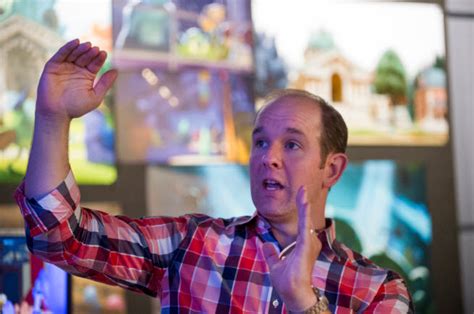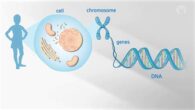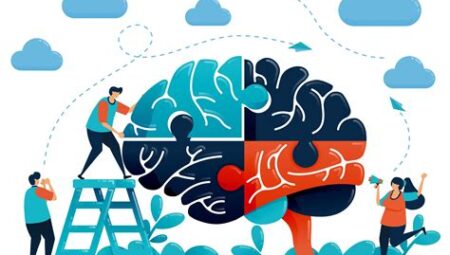Animation has become an integral part of the entertainment industry, captivating audiences of all ages with its colorful and imaginative characters. From the classic 2D animations to the cutting-edge 3D creations, the world of animation continues to evolve and push the boundaries of creativity. In this blog post, we’ll delve into the fascinating realm of character creation in animation, exploring the impact of animation on the entertainment industry and the art of breathing life into animated characters. From the initial concept and design to the portrayal of emotions through expressive facial animation and body language, we’ll uncover the intricate process of bringing animated characters to life. Join us on a journey through the evolution of character development and the power of voice acting in the mesmerizing world of animation. Whether you’re an aspiring animator, a fan of animated films and series, or simply curious about the magic behind the screen, this blog post is your gateway to understanding the art and craft of animation.
Table of Contents
The Impact of Animation in the Entertainment Industry
Animation has become a powerful force in the entertainment industry, revolutionizing the way stories are told and characters are brought to life. With the advancement of technology, animated films and series have gained immense popularity and have become a significant part of our modern culture. The impact of animation can be seen in various aspects of the entertainment industry, from filmmaking and television to advertising and gaming.
One of the key impacts of animation in the entertainment industry is its ability to attract and engage audiences of all ages. Animated characters and stories have a universal appeal, transcending language and cultural barriers. This has led to the creation of iconic characters and franchises that have captured the hearts and imaginations of millions around the world.
Furthermore, animation has opened up new possibilities for storytelling and visual expression. It allows creators to bring fantastical worlds and extraordinary creatures to life in ways that would be impossible to achieve through live-action alone. This has expanded the creative potential of the entertainment industry, giving rise to groundbreaking animated films and series that push the boundaries of imagination and innovation.
Moreover, animation has had a significant economic impact on the entertainment industry. Successful animated films and series often generate substantial revenue through box office sales, merchandise, and licensing deals. This has led to the establishment of animation studios and production companies dedicated to creating high-quality animated content, contributing to the growth and diversification of the entertainment market.
Understanding the Art of Character Creation
Character creation in animation is a meticulous process that involves a deep understanding of visual storytelling, character psychology, and design principles.
It starts with the concept development stage, where the creators brainstorm and ideate on the personality, appearance, and role of the character in the story.
Next comes the design phase, where the visual aspects of the character are fleshed out, including their physical attributes, attire, and overall aesthetic.
This is followed by the development of the character’s backstory, motivations, and beliefs, which adds layers of depth and complexity to their personality and behavior.
From Concept to Existence: Designing Animated Characters
Designing animated characters is a complex and intricate process that requires a unique blend of creativity, technical skill, and storytelling prowess. From the initial concept phase to the final rendering of a fully realized character, every step of the design process plays a crucial role in bringing these animated personas to life.
One of the first and most crucial steps in the character design process is the concept stage. This is where the vision for the character is first imagined, with rough sketches and brainstorming sessions laying the groundwork for what will eventually become a fully fleshed-out persona. At this stage, the designer must consider important elements such as the character’s personality, background story, and physical appearance.
Once the concept is solidified, the next step is to begin fleshing out the character’s design. This involves creating more detailed sketches and illustrations, exploring different facial features, body types, and clothing options to find the perfect combination that captures the essence of the character. The goal during this stage is to create a design that is instantly recognizable and visually compelling.
After the design has been finalized, the character is then brought to life through animation. This involves creating a skeleton or armature for the character and manipulating it frame by frame to give the illusion of movement. The character’s movements and expressions are carefully crafted to convey their personality and emotions, adding another layer of depth to their design.
The Importance of Expressive Facial Animation
Facial animation plays a crucial role in bringing animated characters to life. It serves as the window to their emotions, allowing the audience to connect with and understand the character on a deeper level. The ability to effectively convey various expressions through facial animation is a skill that is highly valued in the animation industry.
Expressive facial animation adds depth and complexity to a character, making them more relatable and engaging for the audience. It allows the character to communicate subtle nuances of emotion that words alone cannot convey. Whether it’s a look of determination, a sly smile, or a pained expression, facial animation has the power to evoke empathy and create a strong emotional connection between the character and the audience.
In addition to emotional expression, facial animation also plays a significant role in conveying the personality and traits of a character. From the way they furrow their brows in concentration to the tilt of their head in curiosity, these subtle movements can speak volumes about the character’s nature. A well-executed facial animation can reveal character motivations, intentions, and conflicts without the need for explicit exposition.
Moreover, expressive facial animation enhances the overall storytelling experience, as it allows the audience to empathize with the characters and become more invested in the narrative. It contributes to the suspension of disbelief and provides a more immersive viewing experience. Whether it’s a heartwarming smile that tugs at the heartstrings or a menacing glare that instills fear, the impact of facial animation on audience engagement cannot be overstated.
Breathing Life into 2D and 3D Characters
Creating 2D and 3D characters in animation involves a great deal of skill and creativity. One of the most important aspects of this process is breathing life into these characters, making them believable and relatable to audiences. This involves a combination of factors such as design, movement, and expression.
Designing characters for animation involves not just drawing or modeling their physical appearance, but also giving them a personality that shines through in their every action. This involves thinking about their backstory, motivations, and emotions, and how these factors come together to make them unique and engaging.
When it comes to movement, animators have the responsibility of making sure that 2D and 3D characters move in a way that is realistic and expressive. Their movements should communicate their feelings and thoughts, adding depth and dimension to their personalities. Whether it’s a subtle facial expression or a grand gesture, every movement plays a part in breathing life into these characters.
Another important element in animating 2D and 3D characters is their ability to emote and express themselves. This involves everything from their facial expressions to their body language, and sometimes even their voice acting. These elements come together to create characters that feel real and resonate with audiences on an emotional level.
Mastering Movement: The Role of Body Language in Animation
Body language is an essential tool in animation, allowing characters to convey emotion, personality, and intentions without saying a word. The subtle movements of the body can speak volumes, adding depth and nuance to the character’s portrayal. From a simple gesture to a full body movement, body language plays a crucial role in bringing animated characters to life.
The key to mastering movement in animation is to understand the intricacies of human body language. Observing real-life interactions, gestures, and movements can provide valuable insights into how to translate these actions into animated form. By capturing the nuances of body language, animators can create characters that feel authentic and relatable to the audience.
Moreover, body language can be used to communicate a character’s thoughts, feelings, and desires, often revealing more about the character than their words alone. The way a character holds themselves, their facial expressions, and their posture can all contribute to the audience’s understanding of the character’s inner world, adding depth and complexity to the storytelling.
When animating body language, attention to detail is crucial. Every movement, whether big or small, should be intentional and purposeful, contributing to the overall narrative and character development. By mastering the art of body language in animation, animators can craft compelling and engaging stories that resonate with audiences on a deeper level.
Building Believable Backstories for Animated Characters
When creating animated characters, one of the most important aspects to consider is their backstory. Building a believable backstory allows for a deeper understanding of the character, their motivations, and the choices they make throughout the story. This not only adds depth to the character, but also helps to create a more engaging and relatable experience for the audience.
One of the key elements in building a believable backstory is ensuring that it aligns with the overall theme and tone of the animation. Whether the character is a hero, villain, or sidekick, their backstory should enrich the storytelling and contribute to the overall narrative. This requires careful consideration of the character’s origins, experiences, and significant events that have shaped who they are.
In addition, a compelling backstory should also include emotional depth and complexity. This means exploring the character’s internal struggles, desires, and fears, as well as the impact of their past on their present actions. By incorporating these elements, the character becomes more multi-dimensional and resonates with the audience on a much deeper level.
Ultimately, building believable backstories for animated characters is a crucial aspect of character development in animation. It adds layers to the storytelling, enhances the audience’s connection to the characters, and ultimately contributes to the overall success of the animation.
The Power of Voice Acting and Character Voice Design
Voice acting is a crucial element in the world of animation, bringing characters to life through the power of sound. The ability to convey emotions, personalities, and storylines through the tone, pacing, and delivery of a character’s voice is an art form in itself. Strong voice acting can elevate an animated character from being simply visually appealing to being truly captivating and memorable.
Character voice design goes hand in hand with voice acting, as it involves the creation and development of the character’s unique voice, which is essential for bringing authenticity and depth to the character’s portrayal. A well-designed character voice adds another layer of personality and dimension to the overall animation, making the character more relatable and engaging to the audience.
Good voice acting and character voice design also play a significant role in shaping the narrative and emotional impact of an animated story. The way in which lines are delivered and the inflections used can greatly influence the audience’s perception of the characters and their experiences, thus enhancing the overall storytelling experience.
Ultimately, the power of voice acting and character voice design lies in their ability to forge a strong connection between the audience and the animated characters, making them feel real and relatable, and leaving a lasting impression that extends beyond the screen.
Animating Emotions: Portraying Feelings through Actions
Animating emotions in animated characters is a crucial element in bringing them to life and connecting with the audience on a deeper level. It involves capturing the essence of human emotions and translating them into the movements and actions of the characters. Through expressive gestures, facial expressions, and body language, animators have the power to convey a wide range of feelings, from joy and sadness to fear and anger.
One of the key aspects of animating emotions is the attention to detail in every movement and action of the character. Small nuances, such as the way a character’s eyes widen in excitement or narrow in suspicion, can significantly impact the audience’s emotional response to the scene. By meticulously animating these subtle changes, animators can create a more authentic and engaging viewing experience.
Furthermore, the synchronization of emotions with character actions is essential for creating a believable and compelling portrayal of feelings. Whether it’s the way a character slumps their shoulders in defeat or jumps for joy, the seamless integration of emotions and actions is what breathes life into the animated characters and makes them resonate with the audience.
In conclusion, animating emotions through actions is a complex yet rewarding aspect of character animation. It requires a deep understanding of human emotions, an eye for detail, and dedication to creating meaningful and impactful character performances. When done effectively, it has the power to evoke empathy and create a lasting emotional connection with the audience.
The Journey of Evolution: Character Development in Animation
Character development in animation is a complex and intricate process that involves a variety of techniques and strategies. From the initial concept to the final product, the evolution of animated characters is a journey filled with creativity and innovation.
One of the key aspects of character development in animation is the creation of a compelling backstory. By delving into the character’s past, animators are able to imbue them with depth and complexity, making them more relatable and engaging for the audience.
Another crucial element in the journey of character evolution is the portrayal of emotions through actions. The movement and gestures of animated characters play a significant role in conveying their feelings, adding layers to their personality and enhancing the overall storytelling.
Furthermore, the evolution of character development in animation also involves the use of voice acting and character voice design. The way a character speaks and the tone of their voice can greatly influence how they are perceived, making it an essential part of their development process.






